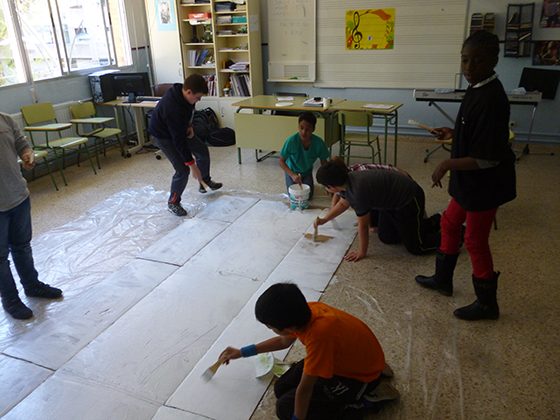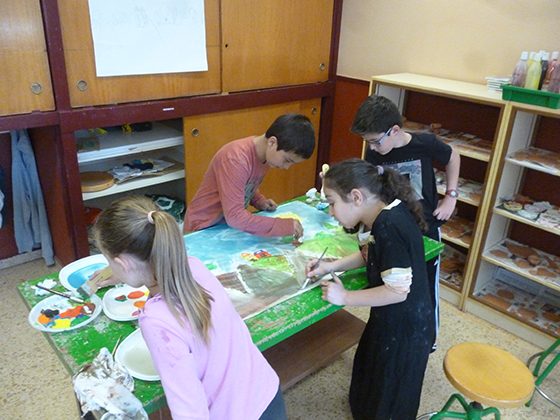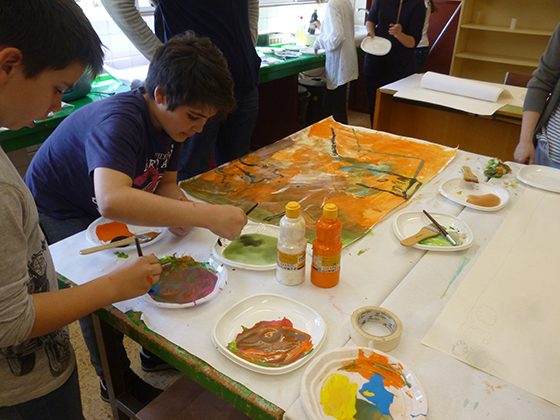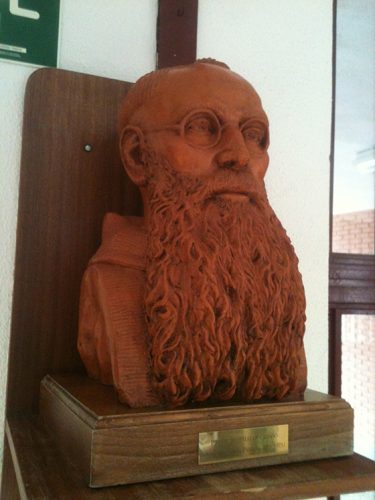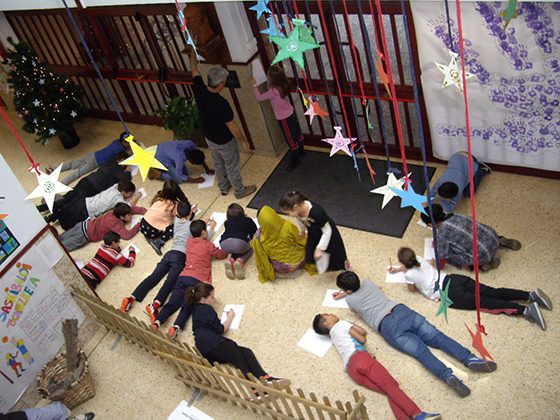The name of the school
Artist: Manu Muniategiandikoetxea
Media: installation and theatre
School: C.P. Padre Orbiso (Vitoria)
Year: 5th
Teacher: Begoña Martínez
Related areas and subjects: Basque Language and Literature and history
Media: installation and theatre
School: C.P. Padre Orbiso (Vitoria)
Year: 5th
Teacher: Begoña Martínez
Related areas and subjects: Basque Language and Literature and history
Objective:
To give students an original look at the everyday things around them, prompting them to learn more about the origin of their school’s name and the background of the character it was named after; in the process, they discovered aesthetic and creative possibilities for lending shape to their findings.
Materials:
Three pieces of cardboard measuring approx. 150 x 150 cm; water paints, small and large paintbrushes, pencils, felt tip pens, scissors, dolls from recycled materials, paper pulp, little sticks of wood.
Project:
- The students were asked to find information online and in the library related to a person of historical interest: in this case, Father Orbiso, the man who gave their school its name.
- Given the lack of recorded material, we set about rebuilding his existence, imagining what life was like in his day and what the place he lived in may have looked like.
- The sculpture of the priest presiding over the school entrance was brought down off its pedestal so that the students could take a closer look at it and draw it.
- Drawing the statue served as an exercise for learning how to give sculpture the correct proportions, paying attention to viewpoints and how to copy from a figure.
- The drawings were turned into masks the allowed them to bring Father Orbiso to life and give him a voice.
- The students made up a story with characters who accompanied the father in his life.
- They made puppets to bring these characters to life and play out their histories.
- To make the puppets, they combined papier mâché with parts of old dolls brought to class by the students.
- The puppets were painted with tempera paint; a wooden stick was added so that they could be held and moved.
- The setting for the action was a large cardboard space.
- Landscapes and interiors were painted on the cardboard as a backdrop for the different scenes.
- Taking their inspiration from the Cells of artist Louise Bourgeois, the stage contained a series of objects and paintings telling stories and taking the spectator to another period and to another time.


